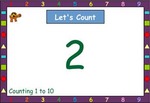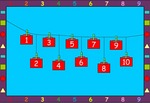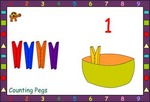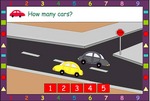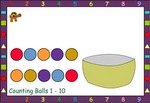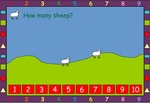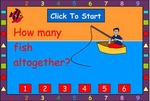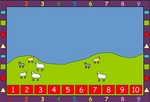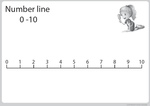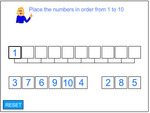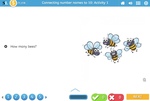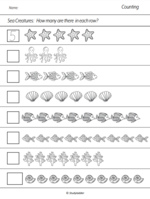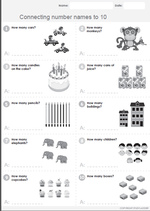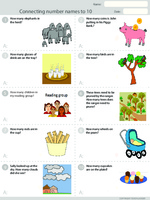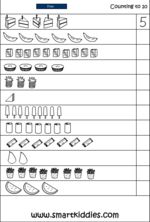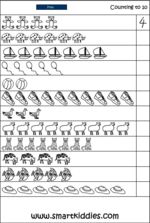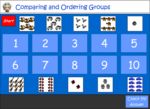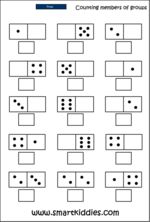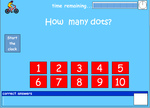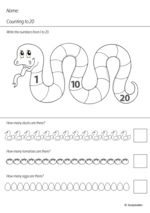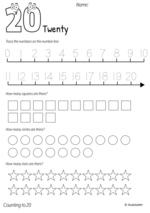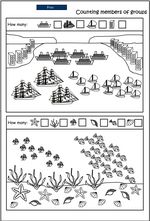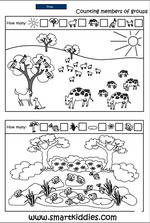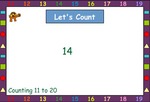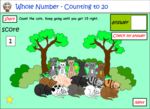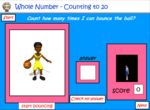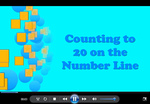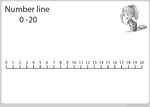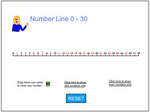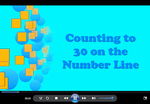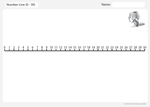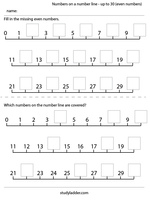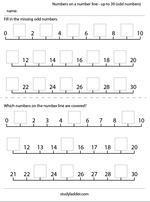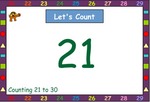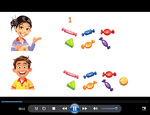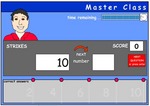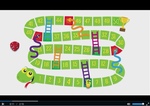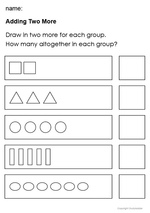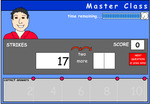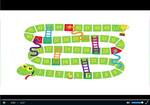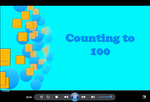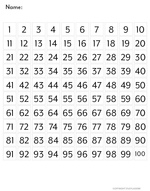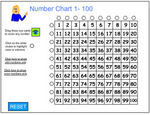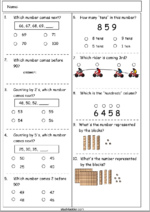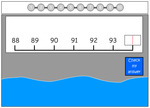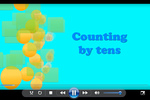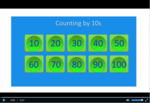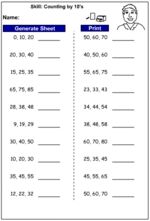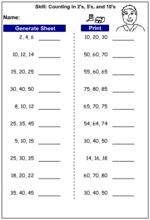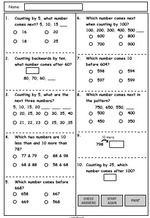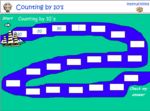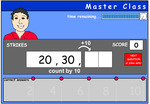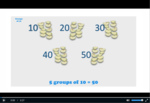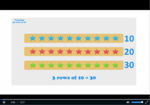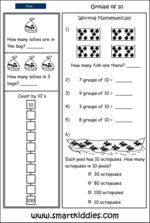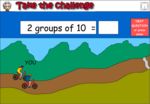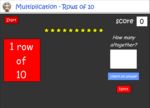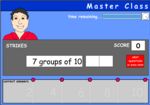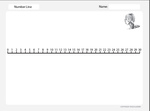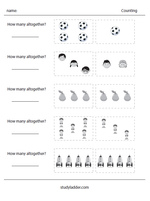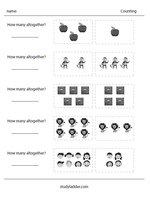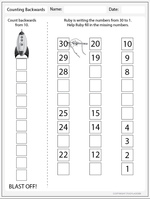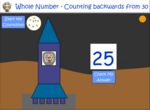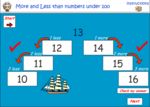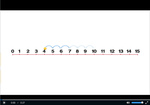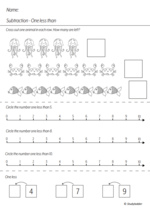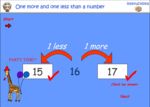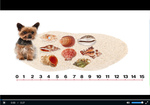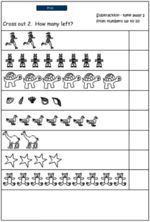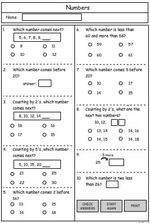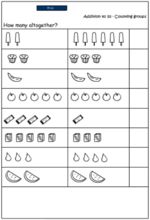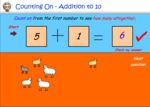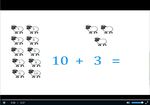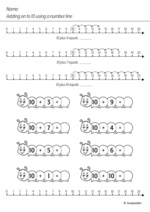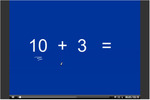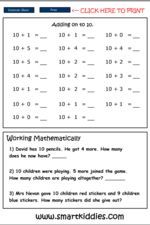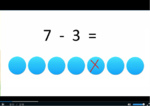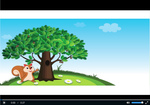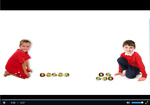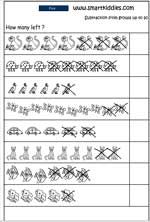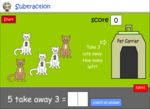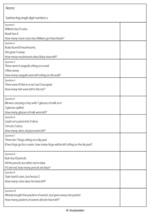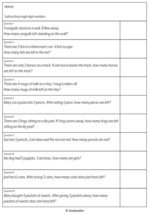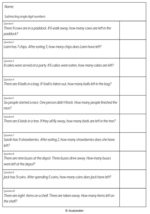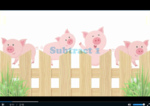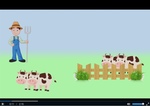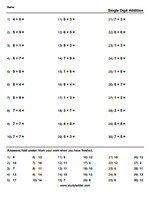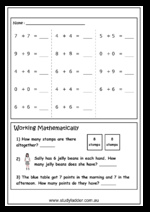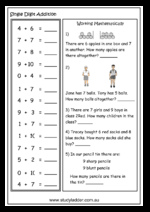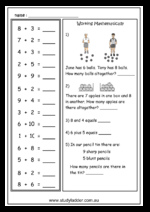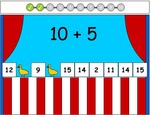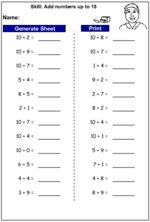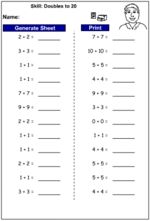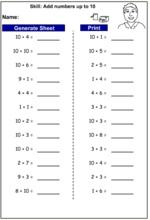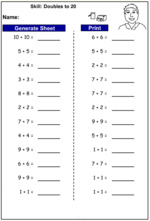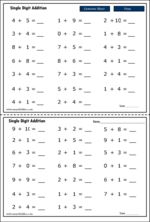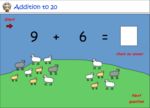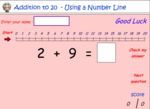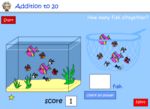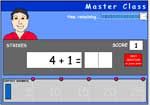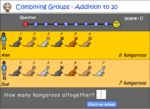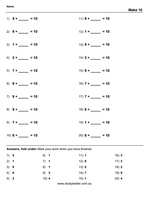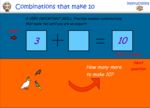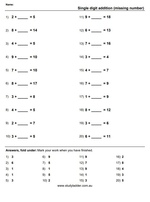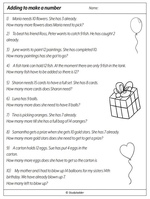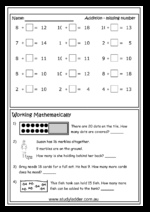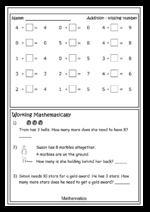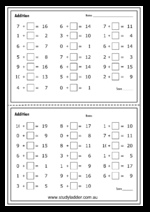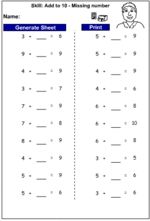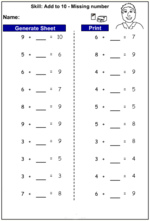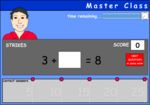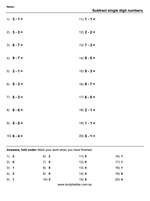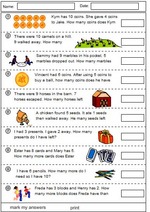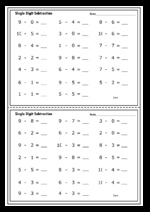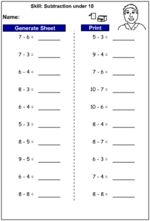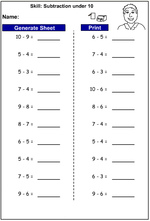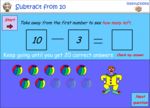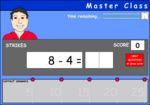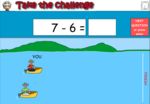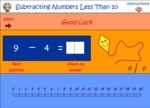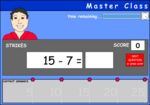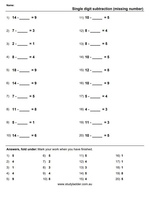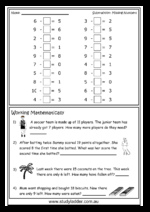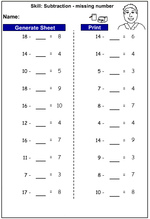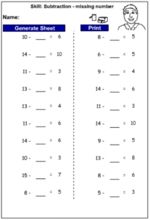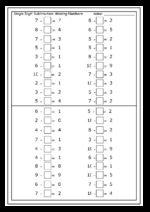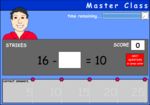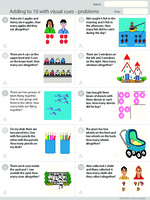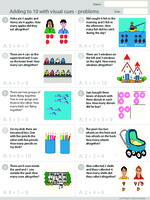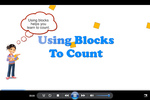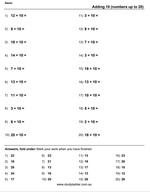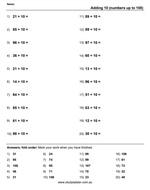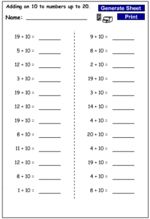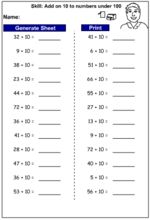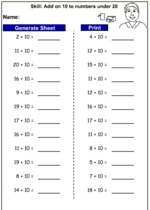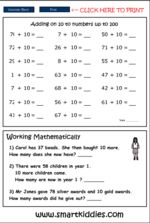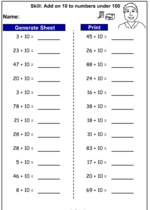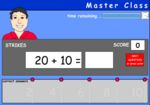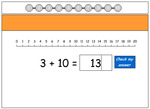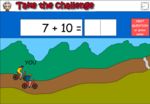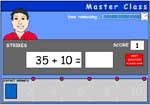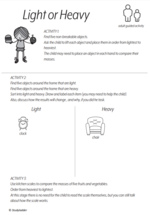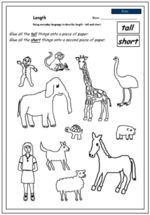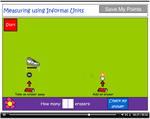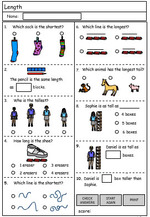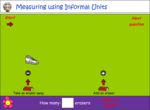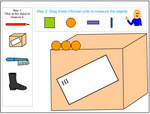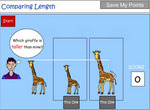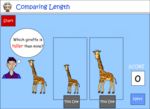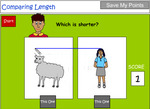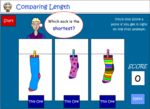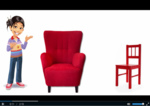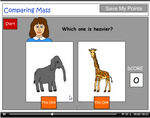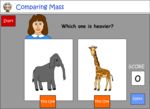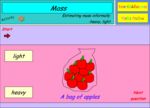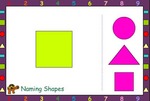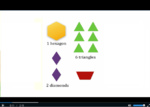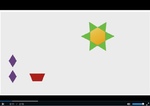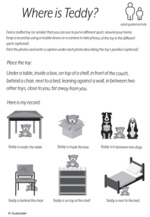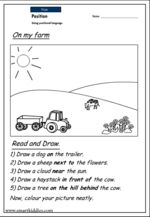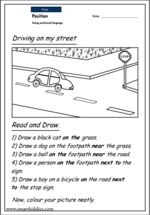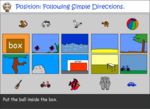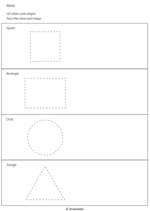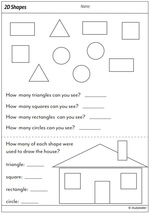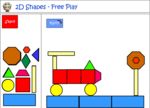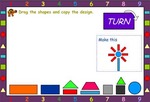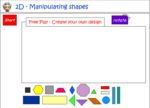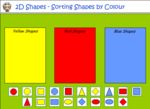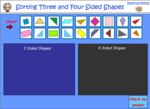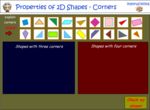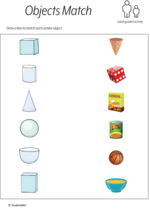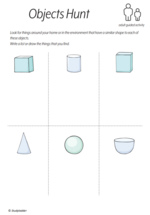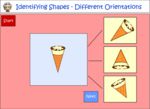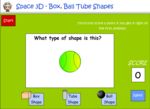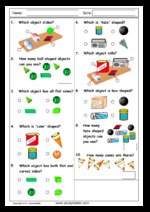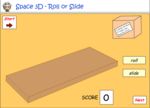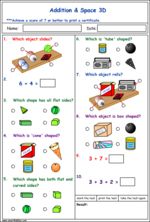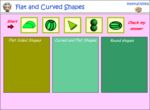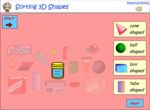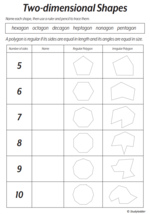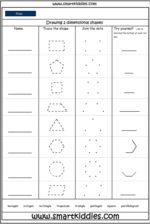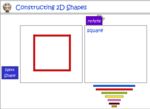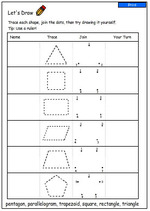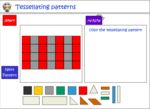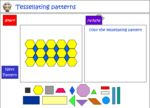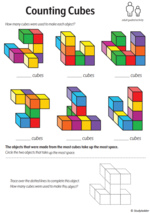Mathematics – United States – Common Core State Standards
K.CC – Counting & Cardinality
Mathematics
K.CC.1 – Count to 100 by ones and by tens.
-
19 learning outcomes – click to view
Samples: Counting to ten. Counting objects (to 10). Counting to 10. Counting to ten on the number line. Counting on the farm.
-
Identifying numbers (1-10)
- Activities: 4 course, 2 extra
-
-
- Counting to ten
- Tutorial
-
-
-
- Identifying numbers (1-10)
- Practice
-
-
-
- Identifying numbers in pictures
- Practice
-
-
-
- Identifying written numbers
- Practice
-
Extra activities
-
-

- Let's Count Together 1-10
- Practice
-
-
-

- Number Recognition to 10
- Practice
-
-
Counting 10 (matching)
- Activities: 3 course, 7 extra
-
-
- Counting objects (to 10)
- Practice
-
-
-
- Number match concentration game
- Practice
-
-
-
- Counting objects (to 10)
- Practice
-
Extra activities
-
-

- Counting to 5
- Practice
-
-
-

- Number of Objects
- Practice
-
-
-

- Counting to 10
- Practice
-
-
-

- Number of Objects to 10
- Practice
-
-
-

- Number Game
- Practice
-
-
-

- Addition to 6
- Practice
-
-
-

- Addition to 10
- Practice
-
-
Counting to 10 (fingers)
- Activities: 6 course, 0 extra
-
-
- Counting to 10
- Tutorial
-
-
-
- Counting fingers
- Practice
-
-
-
- Counting fingers
- Practice
-
-
-
- Counting fingers
- Practice
-
-
-
- Counting to ten
- Tutorial
-
-
Counting to 10 using a number line
- Activities: 6 course, 2 extra
-
-
- Counting to ten on the number line
- Tutorial
-
-
-
- Counting to ten on the number line
- Tutorial
-
-
-
- Counting on the number line to 10
- Practice
-
-
-
- Number line to 10 (missing numbers)
- Practice
-
-
-
- Counting to 10 on the Number Line
- Tutorial
-
Extra activities
-
-
- Number line (0-10)
- Printable
-
-
-

- Ordering Numbers 1 - 10
- Whiteboard
-
-
Counting to 10
- Activities: 11 course, 7 extra
-
-
- Counting on the farm
- Tutorial
-
-
-
- How many circles
- Practice
-
-
-
- Counting objects (to 10)
- Practice
-
-
-
- Counting objects (to 10)
- Practice
-
-
-
- Counting objects to 10 (sheep)
- Practice
-
-
-
- Counting objects to 10
- Practice
-
-
-
- Counting objects to 10
- Practice
-
-
-
- Counting to 10
- Printable
-
-
-
- Counting objects (to 10)
- Tutorial
-
Extra activities
-
-
- Numbers 1 - 10 (posters)
- Printable
-
-
-
- Counting to 10
- Printable
-
-
-
- Counting to 10
- Printable
-
-
-
- Counting to 10
- Printable
-
-
-
- Counting to 10
- Printable
-
-
-

- Counting to 10
- Practice
-
-
-

- Ordering groups of objects to 10
- Practice
-
-
Subitising - ten frame
- Activities: 2 course, 2 extra
-
-
- Subitising - ten frame
- Practice
-
-
-
- Subitising - ten frame
- Practice
-
Extra activities
-
-
- Recognizing a dot pattern
- Printable
-
-
-

- Timed number
- Practice
-
-
Counting to 20
- Activities: 7 course, 7 extra
-
-
- Counting to 20
- Tutorial
-
-
-
- Counting to 20
- Tutorial
-
-
-
- Counting 20 objects (from 10)
- Practice
-
-
-
- Counting to twenty using counters
- Practice
-
-
-
- Counting to 20
- Printable
-
-
-
- How many to 20
- Printable
-
-
-
- Counting to 20 using counters
- Tutorial
-
Extra activities
-
-
- Counting to 10 and 20 - part 2
- Printable
-
-
-
- Counting to 10 and 20 - part 1
- Printable
-
-
-

- Let's count Together 11-20
- Practice
-
-
-

- Count to 20 - chooks
- Practice
-
-
-

- Count to 20 - cats
- Practice
-
-
-

- Count to 20 - sport
- Practice
-
-
Counting to 20 on a number Line
- Activities: 4 course, 2 extra
-
-
- Numbers to 20 (number line)
- Practice
-
-
-
- Counting on the Number Line to 20
- Tutorial
-
Extra activities
-
-
- Number line (0-20)
- Printable
-
-
-

- Number Line 1 - 30
- Whiteboard
-
-
Counting to 30 on a number line
- Activities: 5 course, 4 extra
-
-
- Counting to 30 on a number line
- Tutorial
-
-
-
- Numbers to 30 (number line)
- Practice
-
-
-
- Numbers to 30 (number line)
- Practice
-
-
-
- Numbers to 30 (number line)
- Tutorial
-
Extra activities
-
-
- Number line (0-30)
- Printable
-
-
-
- Numbers to 30 (number line)
- Printable
-
-
-
- Numbers to 30 (number line)
- Printable
-
-
-

- Let's Count Together 21-30
- Practice
-
-
One more than
- Activities: 6 course, 3 extra
-
-
- One and two more than
- Tutorial
-
-
-
- One more than
- Practice
-
-
-
- One more than - number line
- Practice
-
-
-
- One more than - problem solving
- Practice
-
-
-
- One More Than
- Tutorial
-
-
-
- Kevin Captivate Test
- Practice
-
Extra activities
-
-
- TEST
- Practice
-
-
-
- ONE MINUTE CHALLENGE - Adding 1
- Challenge
-
-
-

- Next number - numbers up to 20
- Assessment
-
-
Two more than
- Activities: 4 course, 5 extra
-
-
- Two more than
- Tutorial
-
-
-
- Two more than
- Practice
-
-
-
- Two more than - number line
- Practice
-
-
-
- Two more than - problem solving
- Practice
-
Extra activities
-
-
- Two more than
- Printable
-
-
-
- Count on 2 - numbers up to 10
- Tutorial
-
-
-
- Count on 2 - numbers up to 10
- Tutorial
-
-
-

- Count on 2 - numbers up to 20
- Assessment
-
-
-
- Count on 2 - numbers up to 10
- Tutorial
-
-
Counting to 100 using a hundreds chart
- Activities: 6 course, 2 extra
-
-
- Counting to 100
- Tutorial
-
-
-
- Missing numbers
- Tutorial
-
-
-
- Hundreds chart 1-30
- Practice
-
-
-
- Hundreds chart 31-60
- Practice
-
-
-
- Hundreds chart 61-100
- Practice
-
-
-
- Hundred's Chart Count
- Tutorial
-
Extra activities
-
-
- Hundred's Chart
- Printable
-
-
-

- Number Chart 1 - 100
- Whiteboard
-
-
Counting to one hundred on a number line
- Activities: 3 course, 2 extra
-
-
- Counting to 100 (number line 30-50)
- Practice
-
-
-
- Counting to 100 (number line 50-70)
- Practice
-
-
-
- Counting to 100 (number line 70-100)
- Practice
-
Extra activities
-
-
- Numbers Problem Solving
- Printable
-
-
-

- Count to 100
- Practice
-
-
Counting on by ten on a number line
- Activities: 6 course, 5 extra
-
-
- Counting on number line (by 10's)
- Tutorial
-
-
-
- Counting by 10
- Practice
-
-
-
- Counting by 10
- Practice
-
-
-
- Counting by 10
- Practice
-
-
-
- Counting by 10
- Tutorial
-
-
-
- Counting by 10
- Tutorial
-
Extra activities
-
-
- Counting by 10
- Printable
-
-
-
- Counting by 10
- Printable
-
-
-

- Numbers Problem Solving
- Assessment
-
-
-

- Count by lots of 10
- Practice
-
-
-

- Counting by 10
- Assessment
-
-
Groups of ten
- Activities: 6 course, 5 extra
-
-
- Groups of 10
- Tutorial
-
-
-
- Number of tens
- Practice
-
-
-
- Rows of 10
- Practice
-
-
-
- Groups of 10
- Practice
-
-
-
- Groups of 10
- Tutorial
-
-
-
- Rows Of 10
- Tutorial
-
Extra activities
-
-
- Groups of 10
- Printable
-
-
-
- Groups of 10
- Printable
-
-
-

- Groups of 10
- Challenge
-
-
-

- Rows of ten
- Practice
-
-
-

- Groups of 10
- Assessment
-
-
-
19 learning outcomes – click to view
K.CC.2 – Count forward beginning from a given number within the known sequence (instead of having to begin at 1).
-
4 learning outcomes – click to view
Samples: Counting to ten on the number line. Counting from 10 to 20 on a number line. Counting to 30 on a number line.
-
Counting to 10 using a number line
- Activities: 6 course, 2 extra
-
-
- Counting to ten on the number line
- Tutorial
-
-
-
- Counting to ten on the number line
- Tutorial
-
-
-
- Counting on the number line to 10
- Practice
-
-
-
- Number line to 10 (missing numbers)
- Practice
-
-
-
- Counting to 10 on the Number Line
- Tutorial
-
Extra activities
-
-
- Number line (0-10)
- Printable
-
-
-

- Ordering Numbers 1 - 10
- Whiteboard
-
-
Counting to 20 on a number Line
- Activities: 4 course, 2 extra
-
-
- Numbers to 20 (number line)
- Practice
-
-
-
- Counting on the Number Line to 20
- Tutorial
-
Extra activities
-
-
- Number line (0-20)
- Printable
-
-
-

- Number Line 1 - 30
- Whiteboard
-
-
Counting to 30 on a number line
- Activities: 5 course, 4 extra
-
-
- Counting to 30 on a number line
- Tutorial
-
-
-
- Numbers to 30 (number line)
- Practice
-
-
-
- Numbers to 30 (number line)
- Practice
-
-
-
- Numbers to 30 (number line)
- Tutorial
-
Extra activities
-
-
- Number line (0-30)
- Printable
-
-
-
- Numbers to 30 (number line)
- Printable
-
-
-
- Numbers to 30 (number line)
- Printable
-
-
-

- Let's Count Together 21-30
- Practice
-
-
Counting to one hundred on a number line
- Activities: 3 course, 2 extra
-
-
- Counting to 100 (number line 30-50)
- Practice
-
-
-
- Counting to 100 (number line 50-70)
- Practice
-
-
-
- Counting to 100 (number line 70-100)
- Practice
-
Extra activities
-
-
- Numbers Problem Solving
- Printable
-
-
-

- Count to 100
- Practice
-
-
-
4 learning outcomes – click to view
K.CC.3 – Write numbers from 0 to 20. Represent a number of objects with a written numeral 0-20 (with 0 representing a count of no objects).
-
6 learning outcomes – click to view
Samples: Counting to ten. Counting objects (to 10). Counting to 20. Counting from 10 to 20 on a number line. Counting to 10.
-
Identifying numbers (1-10)
- Activities: 4 course, 2 extra
-
-
- Counting to ten
- Tutorial
-
-
-
- Identifying numbers (1-10)
- Practice
-
-
-
- Identifying numbers in pictures
- Practice
-
-
-
- Identifying written numbers
- Practice
-
Extra activities
-
-

- Let's Count Together 1-10
- Practice
-
-
-

- Number Recognition to 10
- Practice
-
-
Counting 10 (matching)
- Activities: 3 course, 7 extra
-
-
- Counting objects (to 10)
- Practice
-
-
-
- Number match concentration game
- Practice
-
-
-
- Counting objects (to 10)
- Practice
-
Extra activities
-
-

- Counting to 5
- Practice
-
-
-

- Number of Objects
- Practice
-
-
-

- Counting to 10
- Practice
-
-
-

- Number of Objects to 10
- Practice
-
-
-

- Number Game
- Practice
-
-
-

- Addition to 6
- Practice
-
-
-

- Addition to 10
- Practice
-
-
Counting to 20
- Activities: 7 course, 7 extra
-
-
- Counting to 20
- Tutorial
-
-
-
- Counting to 20
- Tutorial
-
-
-
- Counting 20 objects (from 10)
- Practice
-
-
-
- Counting to twenty using counters
- Practice
-
-
-
- Counting to 20
- Printable
-
-
-
- How many to 20
- Printable
-
-
-
- Counting to 20 using counters
- Tutorial
-
Extra activities
-
-
- Counting to 10 and 20 - part 2
- Printable
-
-
-
- Counting to 10 and 20 - part 1
- Printable
-
-
-

- Let's count Together 11-20
- Practice
-
-
-

- Count to 20 - chooks
- Practice
-
-
-

- Count to 20 - cats
- Practice
-
-
-

- Count to 20 - sport
- Practice
-
-
Counting to 20 on a number Line
- Activities: 4 course, 2 extra
-
-
- Numbers to 20 (number line)
- Practice
-
-
-
- Counting on the Number Line to 20
- Tutorial
-
Extra activities
-
-
- Number line (0-20)
- Printable
-
-
-

- Number Line 1 - 30
- Whiteboard
-
-
Counting to 10 (fingers)
- Activities: 6 course, 0 extra
-
-
- Counting to 10
- Tutorial
-
-
-
- Counting fingers
- Practice
-
-
-
- Counting fingers
- Practice
-
-
-
- Counting fingers
- Practice
-
-
-
- Counting to ten
- Tutorial
-
-
Subitising - ten frame
- Activities: 2 course, 2 extra
-
-
- Subitising - ten frame
- Practice
-
-
-
- Subitising - ten frame
- Practice
-
Extra activities
-
-
- Recognizing a dot pattern
- Printable
-
-
-

- Timed number
- Practice
-
-
-
6 learning outcomes – click to view
Mathematics
K.CC.4 – Understand the relationship between numbers and quantities; connect counting to cardinality.
K.CC.4.a – When counting objects, say the number names in the standard order, pairing each object with one and only one number name and each number name with one and only one object.
-
11 learning outcomes – click to view
Samples: Counting objects (to 10). Counting to 10. Counting to ten on the number line. Counting on the farm. Counting ones.
-
Counting 10 (matching)
- Activities: 3 course, 7 extra
-
-
- Counting objects (to 10)
- Practice
-
-
-
- Number match concentration game
- Practice
-
-
-
- Counting objects (to 10)
- Practice
-
Extra activities
-
-

- Counting to 5
- Practice
-
-
-

- Number of Objects
- Practice
-
-
-

- Counting to 10
- Practice
-
-
-

- Number of Objects to 10
- Practice
-
-
-

- Number Game
- Practice
-
-
-

- Addition to 6
- Practice
-
-
-

- Addition to 10
- Practice
-
-
Counting to 10 (fingers)
- Activities: 6 course, 0 extra
-
-
- Counting to 10
- Tutorial
-
-
-
- Counting fingers
- Practice
-
-
-
- Counting fingers
- Practice
-
-
-
- Counting fingers
- Practice
-
-
-
- Counting to ten
- Tutorial
-
-
Counting to 10 using a number line
- Activities: 6 course, 2 extra
-
-
- Counting to ten on the number line
- Tutorial
-
-
-
- Counting to ten on the number line
- Tutorial
-
-
-
- Counting on the number line to 10
- Practice
-
-
-
- Number line to 10 (missing numbers)
- Practice
-
-
-
- Counting to 10 on the Number Line
- Tutorial
-
Extra activities
-
-
- Number line (0-10)
- Printable
-
-
-

- Ordering Numbers 1 - 10
- Whiteboard
-
-
Counting to 10
- Activities: 11 course, 7 extra
-
-
- Counting on the farm
- Tutorial
-
-
-
- How many circles
- Practice
-
-
-
- Counting objects (to 10)
- Practice
-
-
-
- Counting objects (to 10)
- Practice
-
-
-
- Counting objects to 10 (sheep)
- Practice
-
-
-
- Counting objects to 10
- Practice
-
-
-
- Counting objects to 10
- Practice
-
-
-
- Counting to 10
- Printable
-
-
-
- Counting objects (to 10)
- Tutorial
-
Extra activities
-
-
- Numbers 1 - 10 (posters)
- Printable
-
-
-
- Counting to 10
- Printable
-
-
-
- Counting to 10
- Printable
-
-
-
- Counting to 10
- Printable
-
-
-
- Counting to 10
- Printable
-
-
-

- Counting to 10
- Practice
-
-
-

- Ordering groups of objects to 10
- Practice
-
-
Counting to 20
- Activities: 7 course, 7 extra
-
-
- Counting to 20
- Tutorial
-
-
-
- Counting to 20
- Tutorial
-
-
-
- Counting 20 objects (from 10)
- Practice
-
-
-
- Counting to twenty using counters
- Practice
-
-
-
- Counting to 20
- Printable
-
-
-
- How many to 20
- Printable
-
-
-
- Counting to 20 using counters
- Tutorial
-
Extra activities
-
-
- Counting to 10 and 20 - part 2
- Printable
-
-
-
- Counting to 10 and 20 - part 1
- Printable
-
-
-

- Let's count Together 11-20
- Practice
-
-
-

- Count to 20 - chooks
- Practice
-
-
-

- Count to 20 - cats
- Practice
-
-
-

- Count to 20 - sport
- Practice
-
-
Counting to 20 on a number Line
- Activities: 4 course, 2 extra
-
-
- Numbers to 20 (number line)
- Practice
-
-
-
- Counting on the Number Line to 20
- Tutorial
-
Extra activities
-
-
- Number line (0-20)
- Printable
-
-
-

- Number Line 1 - 30
- Whiteboard
-
-
Counting to 30 on a number line
- Activities: 5 course, 4 extra
-
-
- Counting to 30 on a number line
- Tutorial
-
-
-
- Numbers to 30 (number line)
- Practice
-
-
-
- Numbers to 30 (number line)
- Practice
-
-
-
- Numbers to 30 (number line)
- Tutorial
-
Extra activities
-
-
- Number line (0-30)
- Printable
-
-
-
- Numbers to 30 (number line)
- Printable
-
-
-
- Numbers to 30 (number line)
- Printable
-
-
-

- Let's Count Together 21-30
- Practice
-
-
Subitising - ten frame
- Activities: 2 course, 2 extra
-
-
- Subitising - ten frame
- Practice
-
-
-
- Subitising - ten frame
- Practice
-
Extra activities
-
-
- Recognizing a dot pattern
- Printable
-
-
-

- Timed number
- Practice
-
-
Subitising - objects
- Activities: 4 course, 3 extra
-
-
- Subatising - fingers
- Tutorial
-
-
-
- Subitising - objects
- Practice
-
-
-
- Subitising - objects
- Practice
-
-
-
- Subitising - objects
- Practice
-
Extra activities
-
-
- Subitising - objects
- Printable
-
-
-
- Subitising - objects
- Printable
-
-
Subitising - Matching quantities
- Activities: 2 course, 1 extra
-
-
- Subitising - Matching quantities
- Practice
-
-
-
- Subitising - Matching quantities
- Practice
-
Extra activities
-
-
- Matching pairs of quantities
- Practice
-
-
-
11 learning outcomes – click to view
K.CC.4.b – Understand that the last number name said tells the number of objects counted. The number of objects is the same regardless of their arrangement or the order in which they were counted.
-
9 learning outcomes – click to view
Samples: Counting objects (to 10). Counting to 10. Counting on the farm. Counting ones. Subitising - ten frame.
-
Counting 10 (matching)
- Activities: 3 course, 7 extra
-
-
- Counting objects (to 10)
- Practice
-
-
-
- Number match concentration game
- Practice
-
-
-
- Counting objects (to 10)
- Practice
-
Extra activities
-
-

- Counting to 5
- Practice
-
-
-

- Number of Objects
- Practice
-
-
-

- Counting to 10
- Practice
-
-
-

- Number of Objects to 10
- Practice
-
-
-

- Number Game
- Practice
-
-
-

- Addition to 6
- Practice
-
-
-

- Addition to 10
- Practice
-
-
Counting to 10 (fingers)
- Activities: 6 course, 0 extra
-
-
- Counting to 10
- Tutorial
-
-
-
- Counting fingers
- Practice
-
-
-
- Counting fingers
- Practice
-
-
-
- Counting fingers
- Practice
-
-
-
- Counting to ten
- Tutorial
-
-
Counting to 10
- Activities: 11 course, 7 extra
-
-
- Counting on the farm
- Tutorial
-
-
-
- How many circles
- Practice
-
-
-
- Counting objects (to 10)
- Practice
-
-
-
- Counting objects (to 10)
- Practice
-
-
-
- Counting objects to 10 (sheep)
- Practice
-
-
-
- Counting objects to 10
- Practice
-
-
-
- Counting objects to 10
- Practice
-
-
-
- Counting to 10
- Printable
-
-
-
- Counting objects (to 10)
- Tutorial
-
Extra activities
-
-
- Numbers 1 - 10 (posters)
- Printable
-
-
-
- Counting to 10
- Printable
-
-
-
- Counting to 10
- Printable
-
-
-
- Counting to 10
- Printable
-
-
-
- Counting to 10
- Printable
-
-
-

- Counting to 10
- Practice
-
-
-

- Ordering groups of objects to 10
- Practice
-
-
Subitising - ten frame
- Activities: 2 course, 2 extra
-
-
- Subitising - ten frame
- Practice
-
-
-
- Subitising - ten frame
- Practice
-
Extra activities
-
-
- Recognizing a dot pattern
- Printable
-
-
-

- Timed number
- Practice
-
-
Subitising - objects
- Activities: 4 course, 3 extra
-
-
- Subatising - fingers
- Tutorial
-
-
-
- Subitising - objects
- Practice
-
-
-
- Subitising - objects
- Practice
-
-
-
- Subitising - objects
- Practice
-
Extra activities
-
-
- Subitising - objects
- Printable
-
-
-
- Subitising - objects
- Printable
-
-
Counting to 20
- Activities: 7 course, 7 extra
-
-
- Counting to 20
- Tutorial
-
-
-
- Counting to 20
- Tutorial
-
-
-
- Counting 20 objects (from 10)
- Practice
-
-
-
- Counting to twenty using counters
- Practice
-
-
-
- Counting to 20
- Printable
-
-
-
- How many to 20
- Printable
-
-
-
- Counting to 20 using counters
- Tutorial
-
Extra activities
-
-
- Counting to 10 and 20 - part 2
- Printable
-
-
-
- Counting to 10 and 20 - part 1
- Printable
-
-
-

- Let's count Together 11-20
- Practice
-
-
-

- Count to 20 - chooks
- Practice
-
-
-

- Count to 20 - cats
- Practice
-
-
-

- Count to 20 - sport
- Practice
-
-
Counting to 30 on a number line
- Activities: 5 course, 4 extra
-
-
- Counting to 30 on a number line
- Tutorial
-
-
-
- Numbers to 30 (number line)
- Practice
-
-
-
- Numbers to 30 (number line)
- Practice
-
-
-
- Numbers to 30 (number line)
- Tutorial
-
Extra activities
-
-
- Number line (0-30)
- Printable
-
-
-
- Numbers to 30 (number line)
- Printable
-
-
-
- Numbers to 30 (number line)
- Printable
-
-
-

- Let's Count Together 21-30
- Practice
-
-
Subitising - Matching quantities
- Activities: 2 course, 1 extra
-
-
- Subitising - Matching quantities
- Practice
-
-
-
- Subitising - Matching quantities
- Practice
-
Extra activities
-
-
- Matching pairs of quantities
- Practice
-
-
-
9 learning outcomes – click to view
K.CC.4.c – Understand that each successive number name refers to a quantity that is one larger.
-
5 learning outcomes – click to view
Samples: One and two more than. Two more than. Counting to ten on the number line. Counting backwards.
-
One more than
- Activities: 6 course, 3 extra
-
-
- One and two more than
- Tutorial
-
-
-
- One more than
- Practice
-
-
-
- One more than - number line
- Practice
-
-
-
- One more than - problem solving
- Practice
-
-
-
- One More Than
- Tutorial
-
-
-
- Kevin Captivate Test
- Practice
-
Extra activities
-
-
- TEST
- Practice
-
-
-
- ONE MINUTE CHALLENGE - Adding 1
- Challenge
-
-
-

- Next number - numbers up to 20
- Assessment
-
-
Two more than
- Activities: 4 course, 5 extra
-
-
- Two more than
- Tutorial
-
-
-
- Two more than
- Practice
-
-
-
- Two more than - number line
- Practice
-
-
-
- Two more than - problem solving
- Practice
-
Extra activities
-
-
- Two more than
- Printable
-
-
-
- Count on 2 - numbers up to 10
- Tutorial
-
-
-
- Count on 2 - numbers up to 10
- Tutorial
-
-
-

- Count on 2 - numbers up to 20
- Assessment
-
-
-
- Count on 2 - numbers up to 10
- Tutorial
-
-
Counting to 10 using a number line
- Activities: 6 course, 2 extra
-
-
- Counting to ten on the number line
- Tutorial
-
-
-
- Counting to ten on the number line
- Tutorial
-
-
-
- Counting on the number line to 10
- Practice
-
-
-
- Number line to 10 (missing numbers)
- Practice
-
-
-
- Counting to 10 on the Number Line
- Tutorial
-
Extra activities
-
-
- Number line (0-10)
- Printable
-
-
-

- Ordering Numbers 1 - 10
- Whiteboard
-
-
Counting backwards from 30
- Activities: 4 course, 4 extra
-
-
- Counting backwards
- Tutorial
-
-
-
- Counting backwards
- Practice
-
Extra activities
-
-
- Counting backwards
- Printable
-
-
-

- Counting backwards from 30
- Practice
-
-
-
- Counting backwards from 30
- Tutorial
-
-
-

- Count forwards and backwards by 1
- Practice
-
-
Counting backwards from ten
- Activities: 5 course, 2 extra
-
-
- Counting forwards and backwards by 1
- Tutorial
-
-
-
- Counting backwards from 10
- Practice
-
-
-
- Counting backwards on a number line
- Practice
-
Extra activities
-
-
5 learning outcomes – click to view
K.CC.5 – Count to answer “how many?” questions about as many as 20 things arranged in a line, a rectangular array, or a circle, or as many as 10 things in a scattered configuration; given a number from 1–20, count out that many objects.
-
6 learning outcomes – click to view
Samples: Counting to 20. Counting from 10 to 20 on a number line. Counting on the farm. Subitising - ten frame.
-
Counting to 20
- Activities: 7 course, 7 extra
-
-
- Counting to 20
- Tutorial
-
-
-
- Counting to 20
- Tutorial
-
-
-
- Counting 20 objects (from 10)
- Practice
-
-
-
- Counting to twenty using counters
- Practice
-
-
-
- Counting to 20
- Printable
-
-
-
- How many to 20
- Printable
-
-
-
- Counting to 20 using counters
- Tutorial
-
Extra activities
-
-
- Counting to 10 and 20 - part 2
- Printable
-
-
-
- Counting to 10 and 20 - part 1
- Printable
-
-
-

- Let's count Together 11-20
- Practice
-
-
-

- Count to 20 - chooks
- Practice
-
-
-

- Count to 20 - cats
- Practice
-
-
-

- Count to 20 - sport
- Practice
-
-
Counting to 20 on a number Line
- Activities: 4 course, 2 extra
-
-
- Numbers to 20 (number line)
- Practice
-
-
-
- Counting on the Number Line to 20
- Tutorial
-
Extra activities
-
-
- Number line (0-20)
- Printable
-
-
-

- Number Line 1 - 30
- Whiteboard
-
-
Counting to 10
- Activities: 11 course, 7 extra
-
-
- Counting on the farm
- Tutorial
-
-
-
- How many circles
- Practice
-
-
-
- Counting objects (to 10)
- Practice
-
-
-
- Counting objects (to 10)
- Practice
-
-
-
- Counting objects to 10 (sheep)
- Practice
-
-
-
- Counting objects to 10
- Practice
-
-
-
- Counting objects to 10
- Practice
-
-
-
- Counting to 10
- Printable
-
-
-
- Counting objects (to 10)
- Tutorial
-
Extra activities
-
-
- Numbers 1 - 10 (posters)
- Printable
-
-
-
- Counting to 10
- Printable
-
-
-
- Counting to 10
- Printable
-
-
-
- Counting to 10
- Printable
-
-
-
- Counting to 10
- Printable
-
-
-

- Counting to 10
- Practice
-
-
-

- Ordering groups of objects to 10
- Practice
-
-
Subitising - ten frame
- Activities: 2 course, 2 extra
-
-
- Subitising - ten frame
- Practice
-
-
-
- Subitising - ten frame
- Practice
-
Extra activities
-
-
- Recognizing a dot pattern
- Printable
-
-
-

- Timed number
- Practice
-
-
Subitising - objects
- Activities: 4 course, 3 extra
-
-
- Subatising - fingers
- Tutorial
-
-
-
- Subitising - objects
- Practice
-
-
-
- Subitising - objects
- Practice
-
-
-
- Subitising - objects
- Practice
-
Extra activities
-
-
- Subitising - objects
- Printable
-
-
-
- Subitising - objects
- Printable
-
-
Subitising - Matching quantities
- Activities: 2 course, 1 extra
-
-
- Subitising - Matching quantities
- Practice
-
-
-
- Subitising - Matching quantities
- Practice
-
Extra activities
-
-
- Matching pairs of quantities
- Practice
-
-
-
6 learning outcomes – click to view
Mathematics
K.CC.6 – Identify whether the number of objects in one group is greater than, less than, or equal to the number of objects in another group, e.g., by using matching and counting strategies. (Include groups with up to ten objects).
K.CC.7 – Compare two numbers between 1 and 10 presented as written numerals.
-
1 learning outcomes – click to view
Samples: Comparing groups (least). Comparing groups (most). Comparing groups - to 10. Comparing written numbers.
-
Comparing groups and numbers
- Activities: 4 course, 0 extra
-
-
- Comparing groups (least)
- Practice
-
-
-
- Comparing groups (most)
- Practice
-
-
-
- Comparing groups - to 10
- Practice
-
-
-
- Comparing written numbers
- Practice
-
-
-
1 learning outcomes – click to view
K.OA – Operations & Algebraic Thinking
Mathematics
K.OA.1 – Represent addition and subtraction with objects, fingers, mental images, drawings (Drawings need not show details, but should show the mathematics in the problem. (This applies wherever drawings are mentioned in the Standards.)), sounds (e.g., claps), acting out situations, verbal explanations, expressions, or equations.
-
15 learning outcomes – click to view
Samples: Counting to 10. One and two more than. Counting backwards. One and two less than. Two more than. Count on and back by 2.
-
Counting to 10 (fingers)
- Activities: 6 course, 0 extra
-
-
- Counting to 10
- Tutorial
-
-
-
- Counting fingers
- Practice
-
-
-
- Counting fingers
- Practice
-
-
-
- Counting fingers
- Practice
-
-
-
- Counting to ten
- Tutorial
-
-
One more than
- Activities: 6 course, 3 extra
-
-
- One and two more than
- Tutorial
-
-
-
- One more than
- Practice
-
-
-
- One more than - number line
- Practice
-
-
-
- One more than - problem solving
- Practice
-
-
-
- One More Than
- Tutorial
-
-
-
- Kevin Captivate Test
- Practice
-
Extra activities
-
-
- TEST
- Practice
-
-
-
- ONE MINUTE CHALLENGE - Adding 1
- Challenge
-
-
-

- Next number - numbers up to 20
- Assessment
-
-
Counting backwards from 30
- Activities: 4 course, 4 extra
-
-
- Counting backwards
- Tutorial
-
-
-
- Counting backwards
- Practice
-
Extra activities
-
-
- Counting backwards
- Printable
-
-
-

- Counting backwards from 30
- Practice
-
-
-
- Counting backwards from 30
- Tutorial
-
-
-

- Count forwards and backwards by 1
- Practice
-
-
One less than
- Activities: 3 course, 2 extra
-
-
- One and two less than
- Tutorial
-
-
-
- One less
- Practice
-
-
-
- One Less Than
- Tutorial
-
Extra activities
-
-
- One less than
- Printable
-
-
Two more than
- Activities: 4 course, 5 extra
-
-
- Two more than
- Tutorial
-
-
-
- Two more than
- Practice
-
-
-
- Two more than - number line
- Practice
-
-
-
- Two more than - problem solving
- Practice
-
Extra activities
-
-
- Two more than
- Printable
-
-
-
- Count on 2 - numbers up to 10
- Tutorial
-
-
-
- Count on 2 - numbers up to 10
- Tutorial
-
-
-

- Count on 2 - numbers up to 20
- Assessment
-
-
-
- Count on 2 - numbers up to 10
- Tutorial
-
-
Two less than
- Activities: 2 course, 3 extra
-
-
- Count on and back by 2
- Tutorial
-
-
-
- Two less than
- Practice
-
Extra activities
-
-
- Subtract 2 from numbers under 10
- Printable
-
-
-

- Numbers
- Assessment
-
-
Adding to ten using visual cues
- Activities: 0 course, 3 extra
Extra activities
-
-
- Adding by counting (printable)
- Printable
-
-
-

- Add on to 5
- Practice
-
-
-

- Addition of numbers less than 5
- Practice
-
-
Adding-on to 10
- Activities: 7 course, 4 extra
-
-
- Adding on to ten
- Tutorial
-
-
-
- Adding on to 10 by counting
- Tutorial
-
-
-
- Adding on to 10 by counting
- Practice
-
-
-
- Number Lines - adding on to 10
- Practice
-
-
-
- Adding on to 10
- Practice
-
-
-
- Adding on to 10 (problem solving)
- Practice
-
Extra activities
-
-
- Adding on to 10 using a number line
- Printable
-
-
-
- Adding on to 10 with visual cues.
- Practice
-
-
-
- Add on to 10
- Tutorial
-
-
-
- Add on to 10
- Printable
-
-
Subtracting single digit numbers - visual
- Activities: 4 course, 0 extra
-
Subtracting from 10
- Activities: 7 course, 2 extra
-
-
- Subtracting from 10
- Tutorial
-
-
-
- Subtracting from 10
- Tutorial
-
-
-
- Subtracting from 10
- Tutorial
-
-
-
- Subtracting from 10
- Practice
-
-
-
- Subtraction from 10
- Practice
-
-
-
- Subtracting from 10
- Practice
-
Extra activities
-
-
- Subtract - numbers under 10
- Printable
-
-
-

- Subtract - numbers under 10
- Practice
-
-
Subtracting single-digit numbers (problem solving)
- Activities: 4 course, 3 extra
Extra activities
-
-
- Subtracting single digit numbers
- Printable
-
-
-
- Subtracting single digit numbers
- Printable
-
-
-
- Subtracting single digit numbers
- Printable
-
-
Adding two more on a number line
- Activities: 2 course, 0 extra
-
-
- Adding 2 (number line)
- Challenge
-
-
-
- ONE MINUTE CHALLENGE - Add 2
- Challenge
-
-
Take one away
- Activities: 3 course, 0 extra
-
-
- Subtract 1 from numbers under 10
- Tutorial
-
-
-
- Subtract 1 from numbers under 10
- Practice
-
-
-
- Subtract 1 from numbers under 10
- Practice
-
-
Subtracting 2
- Activities: 3 course, 0 extra
-
-
- Subtracting 2
- Tutorial
-
-
-
- Subtracting 2
- Practice
-
-
-
- Subtracting 2 (problem solving)
- Practice
-
-
-
15 learning outcomes – click to view
K.OA.2 – Solve addition and subtraction word problems, and add and subtract within 10, e.g., by using objects or drawings to represent the problem.
-
9 learning outcomes – click to view
Samples: Adding by counting (printable). Adding on to ten. Subtracting single digit numbers (problem solving).
-
Adding to ten using visual cues
- Activities: 0 course, 3 extra
Extra activities
-
-
- Adding by counting (printable)
- Printable
-
-
-

- Add on to 5
- Practice
-
-
-

- Addition of numbers less than 5
- Practice
-
-
Adding-on to 10
- Activities: 7 course, 4 extra
-
-
- Adding on to ten
- Tutorial
-
-
-
- Adding on to 10 by counting
- Tutorial
-
-
-
- Adding on to 10 by counting
- Practice
-
-
-
- Number Lines - adding on to 10
- Practice
-
-
-
- Adding on to 10
- Practice
-
-
-
- Adding on to 10 (problem solving)
- Practice
-
Extra activities
-
-
- Adding on to 10 using a number line
- Printable
-
-
-
- Adding on to 10 with visual cues.
- Practice
-
-
-
- Add on to 10
- Tutorial
-
-
-
- Add on to 10
- Printable
-
-
Subtracting single-digit numbers (problem solving)
- Activities: 4 course, 3 extra
Extra activities
-
-
- Subtracting single digit numbers
- Printable
-
-
-
- Subtracting single digit numbers
- Printable
-
-
-
- Subtracting single digit numbers
- Printable
-
-
Adding single-digit numbers - number skills
- Activities: 7 course, 17 extra
-
-
- Adding single digit numbers
- Tutorial
-
-
-
- Adding single digit numbers
- Tutorial
-
-
-
- Adding single digit numbers
- Tutorial
-
-
-
- Adding single digit numbers
- Practice
-
-
-
- Adding single digit numbers
- Challenge
-
-
-
- Add numbers less than 5
- Tutorial
-
Extra activities
-
-
- Adding single digit numbers
- Printable
-
-
-
- Add doubles - single digit numbers
- Printable
-
-
-
- Adding single digit numbers
- Printable
-
-
-
- Adding single digit numbers
- Printable
-
-
-
- Timed Challenge: Add numbers less than 5
- Challenge
-
-
-

- Add Single Digits Duck Game
- Practice
-
-
-
- Drill - Add numbers up to 10.
- Printable
-
-
-
- Drill - Doubles to 20
- Printable
-
-
-

- Drill - Doubles to 20 (Auto-Generated)
- Printable
-
-
-
- Add single digit numbers
- Printable
-
-
-

- Addition to 20 - with visual cues
- Practice
-
-
-

- Add numbers less than 5
- Assessment
-
-
-

- Add single digit numbers
- Assessment
-
-
-

- Combining to 20
- Practice
-
-
Make 10.
- Activities: 6 course, 4 extra
-
-
- Make 10
- Tutorial
-
-
-
- Make 10
- Tutorial
-
-
-
- Make 10
- Practice
-
-
-
- Make 10
- Practice
-
-
-
- Make 10 (20 questions)
- Practice
-
-
-
- Make 10 - Using a number line
- Practice
-
Extra activities
-
-
- Make 10
- Tutorial
-
-
-
- Make 10
- Printable
-
-
-
- Make 10 - Visual cues
- Practice
-
-
-

- Combination to 10
- Practice
-
-
Single-digit addition (missing number)
- Activities: 5 course, 10 extra
-
-
- Single digit addition (missing number)
- Challenge
-
Extra activities
-
-
- Single digit addition (missing number)
- Printable
-
-
-
- Single digit addition (missing number)
- Printable
-
-
-
- Single digit addition (missing number)
- Printable
-
-
-
- Single digit addition (missing number)
- Printable
-
-
-
- Single digit addition (missing number)
- Printable
-
-
-
- Single digit addition (missing number)
- Printable
-
-
-

- Addition with a missing number
- Assessment
-
-
Subtracting single-digit numbers
- Activities: 4 course, 12 extra
-
-
- Subtracting single digit numbers
- Tutorial
-
-
-
- Subtracting single digit numbers
- Practice
-
-
-
- Subtracting single digit numbers
- Challenge
-
Extra activities
-
-
- Subtract single digit numbers
- Printable
-
-
-

- Subtraction problem solving
- Assessment
-
-
-
- Subtract single digit numbers
- Printable
-
-
-
- Drill - Subtraction under 10
- Printable
-
-
-
- Subtract single digit numbers
- Tutorial
-
-
-
- Subtract single digits
- Tutorial
-
-
-

- Subtract from 10
- Practice
-
-
-

- Subtract single digit numbers
- Assessment
-
-
-

- Subtract single digit numbers
- Challenge
-
-
-

- Subtract single digit numbers
- Practice
-
-
-

- Subtract numbers less than 20
- Assessment
-
-
Single-digit addition problem solving using visual cues
- Activities: 0 course, 2 extra
Extra activities
-
-
- Adding by counting (problem solving)
- Printable
-
-
-
- Adding by counting (problem solving)
- Printable
-
-
-
9 learning outcomes – click to view
K.OA.3 – Decompose numbers less than or equal to 10 into pairs in more than one way, e.g., by using objects or drawings, and record each decomposition by a drawing or equation (e.g., 5 = 2 + 3 and 5 = 4 + 1).
-
3 learning outcomes – click to view
Samples: Subitising - Matching quantities. Subitising - ten frame. Subatising - fingers. Subitising - Matching quantities.
-
Subitising - Matching quantities
- Activities: 2 course, 1 extra
-
-
- Subitising - Matching quantities
- Practice
-
-
-
- Subitising - Matching quantities
- Practice
-
Extra activities
-
-
- Matching pairs of quantities
- Practice
-
-
Subitising - ten frame
- Activities: 2 course, 2 extra
-
-
- Subitising - ten frame
- Practice
-
-
-
- Subitising - ten frame
- Practice
-
Extra activities
-
-
- Recognizing a dot pattern
- Printable
-
-
-

- Timed number
- Practice
-
-
Subitising - objects
- Activities: 4 course, 3 extra
-
-
- Subatising - fingers
- Tutorial
-
-
-
- Subitising - objects
- Practice
-
-
-
- Subitising - objects
- Practice
-
-
-
- Subitising - objects
- Practice
-
Extra activities
-
-
- Subitising - objects
- Printable
-
-
-
- Subitising - objects
- Printable
-
-
-
3 learning outcomes – click to view
K.OA.4 – For any number from 1 to 9, find the number that makes 10 when added to the given number, e.g., by using objects or drawings, and record the answer with a drawing or equation.
-
4 learning outcomes – click to view
Samples: Subitising - ten frame. Subatising - fingers. Subitising - Matching quantities. Adding by counting (printable).
-
Subitising - ten frame
- Activities: 2 course, 2 extra
-
-
- Subitising - ten frame
- Practice
-
-
-
- Subitising - ten frame
- Practice
-
Extra activities
-
-
- Recognizing a dot pattern
- Printable
-
-
-

- Timed number
- Practice
-
-
Subitising - objects
- Activities: 4 course, 3 extra
-
-
- Subatising - fingers
- Tutorial
-
-
-
- Subitising - objects
- Practice
-
-
-
- Subitising - objects
- Practice
-
-
-
- Subitising - objects
- Practice
-
Extra activities
-
-
- Subitising - objects
- Printable
-
-
-
- Subitising - objects
- Printable
-
-
Subitising - Matching quantities
- Activities: 2 course, 1 extra
-
-
- Subitising - Matching quantities
- Practice
-
-
-
- Subitising - Matching quantities
- Practice
-
Extra activities
-
-
- Matching pairs of quantities
- Practice
-
-
Adding to ten using visual cues
- Activities: 0 course, 3 extra
Extra activities
-
-
- Adding by counting (printable)
- Printable
-
-
-

- Add on to 5
- Practice
-
-
-

- Addition of numbers less than 5
- Practice
-
-
-
4 learning outcomes – click to view
K.OA.5 – Fluently add and subtract within 5.
-
1 learning outcomes – click to view
Samples: Adding within 5 - activity 1.
-
Adding within six using visual cues
- Activities: 0 course, 1 extra
Extra activities
-
-
- Adding within 5 - activity 1
- Practice
-
-
-
1 learning outcomes – click to view
K.NBT – Number & Operations in Base Ten
Mathematics
K.NBT.1 – Compose and decompose numbers from 11 to 19 into ten ones and some further ones, e.g., by using objects or drawings, and record each composition or decomposition by a drawing or equation (such as 18 = 10 + 8); understand that these numbers are composed of ten ones and one, two, three, four, five, six, seven, eight, or nine ones.
-
6 learning outcomes – click to view
Samples: Place Value Teens Mab using blocks to count. Counting to 20 using cubes. Counting to 20. Adding on to ten.
-
Place value (11-20)
- Activities: 2 course, 0 extra
-
Counting to 20
- Activities: 7 course, 7 extra
-
-
- Counting to 20
- Tutorial
-
-
-
- Counting to 20
- Tutorial
-
-
-
- Counting 20 objects (from 10)
- Practice
-
-
-
- Counting to twenty using counters
- Practice
-
-
-
- Counting to 20
- Printable
-
-
-
- How many to 20
- Printable
-
-
-
- Counting to 20 using counters
- Tutorial
-
Extra activities
-
-
- Counting to 10 and 20 - part 2
- Printable
-
-
-
- Counting to 10 and 20 - part 1
- Printable
-
-
-

- Let's count Together 11-20
- Practice
-
-
-

- Count to 20 - chooks
- Practice
-
-
-

- Count to 20 - cats
- Practice
-
-
-

- Count to 20 - sport
- Practice
-
-
Adding-on to 10
- Activities: 7 course, 4 extra
-
-
- Adding on to ten
- Tutorial
-
-
-
- Adding on to 10 by counting
- Tutorial
-
-
-
- Adding on to 10 by counting
- Practice
-
-
-
- Number Lines - adding on to 10
- Practice
-
-
-
- Adding on to 10
- Practice
-
-
-
- Adding on to 10 (problem solving)
- Practice
-
Extra activities
-
-
- Adding on to 10 using a number line
- Printable
-
-
-
- Adding on to 10 with visual cues.
- Practice
-
-
-
- Add on to 10
- Tutorial
-
-
-
- Add on to 10
- Printable
-
-
Adding single-digit numbers - number skills
- Activities: 7 course, 17 extra
-
-
- Adding single digit numbers
- Tutorial
-
-
-
- Adding single digit numbers
- Tutorial
-
-
-
- Adding single digit numbers
- Tutorial
-
-
-
- Adding single digit numbers
- Practice
-
-
-
- Adding single digit numbers
- Challenge
-
-
-
- Add numbers less than 5
- Tutorial
-
Extra activities
-
-
- Adding single digit numbers
- Printable
-
-
-
- Add doubles - single digit numbers
- Printable
-
-
-
- Adding single digit numbers
- Printable
-
-
-
- Adding single digit numbers
- Printable
-
-
-
- Timed Challenge: Add numbers less than 5
- Challenge
-
-
-

- Add Single Digits Duck Game
- Practice
-
-
-
- Drill - Add numbers up to 10.
- Printable
-
-
-
- Drill - Doubles to 20
- Printable
-
-
-

- Drill - Doubles to 20 (Auto-Generated)
- Printable
-
-
-
- Add single digit numbers
- Printable
-
-
-

- Addition to 20 - with visual cues
- Practice
-
-
-

- Add numbers less than 5
- Assessment
-
-
-

- Add single digit numbers
- Assessment
-
-
-

- Combining to 20
- Practice
-
-
Adding 10 to two-digit numbers
- Activities: 6 course, 14 extra
-
-
- Adding 10
- Tutorial
-
-
-
- Adding 10
- Tutorial
-
-
-
- Adding on 10 using blocks
- Practice
-
-
-
- Adding 10 to numbers up to 100
- Practice
-
-
-
- Adding 10 (to two digits)
- Challenge
-
-
-
- Counting Forwards By 10
- Tutorial
-
Extra activities
-
-
- Adding 10 (numbers up to 20)
- Printable
-
-
-
- Adding 10 (numbers up to 100)
- Printable
-
-
-
- Drill - add on 10 to numbers up to 20
- Printable
-
-
-
- Drill Add On 10 to numbers Less 100
- Printable
-
-
-

- Add on 10 - Jump Strategy
- Practice
-
-
-
6 learning outcomes – click to view
K.MD – Measurement & Data
Mathematics
K.MD.1 – Describe measurable attributes of objects, such as length or weight. Describe several measurable attributes of a single object.
-
3 learning outcomes – click to view
Samples: Light or Heavy. Comparing length. Measuring Length (using informal units). Light or Heavy.
-
Compare length (longer/shorter)
- Activities: 5 course, 1 extra
-
-
- Comparing length
- Tutorial
-
-
-
- Sorting according to length
- Tutorial
-
-
-
- Compare length
- Practice
-
-
-
- Compare length (longer-shorter)
- Tutorial
-
Extra activities
-
-
- Language to describe and compare length
- Printable
-
-
Measure length using informal units.
- Activities: 2 course, 5 extra
-
-
- Measure length using informal units
- Practice
-
Extra activities
-
-
- Length
- Practice
-
-
-

- Length
- Assessment
-
-
-

- Measuring using informal units
- Practice
-
-
-

- Using informal units to measure length.
- Whiteboard
-
-
3 learning outcomes – click to view
K.MD.2 – Directly compare two objects with a measurable attribute in common, to see which object has “more of”/“less of” the attribute, and describe the difference. For example, directly compare the heights of two children and describe one child as taller/shorter.
-
5 learning outcomes – click to view
Samples: Comparing length. Compare length (taller-shorter). Light and heavy. Compare the length of 3 things.
-
Compare length (longer/shorter)
- Activities: 5 course, 1 extra
-
-
- Comparing length
- Tutorial
-
-
-
- Sorting according to length
- Tutorial
-
-
-
- Compare length
- Practice
-
-
-
- Compare length (longer-shorter)
- Tutorial
-
Extra activities
-
-
- Language to describe and compare length
- Printable
-
-
Directly compare length
- Activities: 1 course, 5 extra
-
-
- Compare length (taller-shorter)
- Tutorial
-
Extra activities
-
Lighter and heavier
- Activities: 6 course, 3 extra
-
-
- Light and heavy
- Tutorial
-
-
-
- Light and heavy
- Tutorial
-
-
-
- Comparing mass directly - lighter
- Practice
-
-
-
- Comparing mass directly - heavier
- Practice
-
-
-
- Compare mass directly and indirectly
- Practice
-
Extra activities
-
-

- Language to describe mass tutorial
- Tutorial
-
-
-

- Language to describe mass
- Practice
-
-
Compare the length of three objects
- Activities: 1 course, 0 extra
-
-
- Compare the length of 3 things
- Practice
-
-
Measure length using informal units.
- Activities: 2 course, 5 extra
-
-
- Measure length using informal units
- Practice
-
Extra activities
-
-
- Length
- Practice
-
-
-

- Length
- Assessment
-
-
-

- Measuring using informal units
- Practice
-
-
-

- Using informal units to measure length.
- Whiteboard
-
-
-
5 learning outcomes – click to view
Mathematics
K.MD.3 – Classify objects into given categories; count the numbers of objects in each category and sort the categories by count. (Limit category counts to be less than or equal to 10).
-
1 learning outcomes – click to view
Samples: Sorting items. Sorting - Which belongs to a group. Sort and classify objects.
-
Sorting objects
- Activities: 3 course, 0 extra
-
-
- Sorting items
- Practice
-
-
-
- Sorting - Which belongs to a group
- Practice
-
-
-
- Sort and classify objects
- Practice
-
-
-
1 learning outcomes – click to view
K.G – Geometry
Mathematics
K.G.1 – Describe objects in the environment using names of shapes, and describe the relative positions of these objects using terms such as above, below, beside, in front of, behind, and next to.
-
8 learning outcomes – click to view
Samples: Introduction to Shapes. Shapes - comparing size. Shapes - curved and straight sides. Shapes to fill a space.
-
Introduction to Shapes
- Activities: 1 course, 1 extra
-
Shapes match
- Activities: 3 course, 1 extra
-
-
- Shapes - curved and straight sides
- Tutorial
-
-
-
- Shapes match
- Practice
-
-
-
- Shapes Match 1
- Practice
-
Extra activities
-
-

- Naming Shapes
- Practice
-
-
Shapes to fill a space
- Activities: 2 course, 0 extra
-
-
- Shapes to fill a space
- Practice
-
-
-
- Regular 2D shapes to fill a space
- Practice
-
-
Shapes in pictures
- Activities: 4 course, 0 extra
-
-
- Using shapes to construct a picture
- Tutorial
-
-
-
- Using shapes to construct a picture
- Tutorial
-
-
-
- Using Shapes to construct a picture
- Tutorial
-
-
-
- Shapes in pictures
- Practice
-
-
Describe position by using everyday language.
- Activities: 3 course, 3 extra
-
-
- Position - Where is Teddy?
- Printable
-
Extra activities
-
-
- Positional language
- Printable
-
-
-
- Positional language
- Printable
-
-
-

- Following simple directions
- Practice
-
-
Naming shapes in objects
- Activities: 1 course, 6 extra
-
-
- Naming shapes - objects
- Practice
-
Extra activities
-
-
- Drawing shapes
- Printable
-
-
-
- Identifying shapes
- Printable
-
-
-

- Using shapes to construct a picture
- Practice
-
-
-

- Manipulating Shapes 2
- Practice
-
-
-

- Design using 2D shapes
- Practice
-
-
-
8 learning outcomes – click to view
K.G.2 – Correctly name shapes regardless of their orientations or overall size.
-
8 learning outcomes – click to view
Samples: Sorting two-dimensional shapes. Quadrilaterals. Shapes - curved and straight sides. Shapes to fill a space.
-
Sorting two-dimensional shapes
- Activities: 3 course, 5 extra
-
-
- Sorting two-dimensional shapes
- Practice
-
Extra activities
-
-
- Classify two-dimensional shapes
- Practice
-
-
-
- Classify two-dimensional shapes
- Practice
-
-
-

- Sort 2D shapes - number of corners
- Practice
-
-
Identifying two-dimensional shapes
- Activities: 5 course, 0 extra
-
-
- Quadrilaterals
- Tutorial
-
-
-
- Naming two-dimensional shapes
- Tutorial
-
-
-
- Regular and irregular shapes
- Tutorial
-
-
-
- Identifying two-dimensional shapes
- Practice
-
-
-
- Naming two-dimensional shapes
- Tutorial
-
-
Shapes match
- Activities: 3 course, 1 extra
-
-
- Shapes - curved and straight sides
- Tutorial
-
-
-
- Shapes match
- Practice
-
-
-
- Shapes Match 1
- Practice
-
Extra activities
-
-

- Naming Shapes
- Practice
-
-
Shapes to fill a space
- Activities: 2 course, 0 extra
-
-
- Shapes to fill a space
- Practice
-
-
-
- Regular 2D shapes to fill a space
- Practice
-
-
Shapes in pictures
- Activities: 4 course, 0 extra
-
-
- Using shapes to construct a picture
- Tutorial
-
-
-
- Using shapes to construct a picture
- Tutorial
-
-
-
- Using Shapes to construct a picture
- Tutorial
-
-
-
- Shapes in pictures
- Practice
-
-
Naming shapes in objects
- Activities: 1 course, 6 extra
-
-
- Naming shapes - objects
- Practice
-
Extra activities
-
-
- Drawing shapes
- Printable
-
-
-
- Identifying shapes
- Printable
-
-
-

- Using shapes to construct a picture
- Practice
-
-
-

- Manipulating Shapes 2
- Practice
-
-
-

- Design using 2D shapes
- Practice
-
-
Identifying shapes based on attributes
- Activities: 4 course, 0 extra
-
-
- Tessellating patterns
- Tutorial
-
-
-
- Tessellating patterns
- Tutorial
-
-
-
- Identifying attributes of shapes
- Practice
-
-
-
8 learning outcomes – click to view
K.G.3 – Identify shapes as two-dimensional (lying in a plane, “flat”) or three-dimensional (“solid”).
-
7 learning outcomes – click to view
Samples: Objects match - drawings. Objects match. Shapes to fill a space. Using shapes to construct a picture.
-
Objects match
- Activities: 4 course, 0 extra
-
-
- Objects match
- Practice
-
-
-
- Objects match: Activity 2
- Practice
-
-
-
- Objects Match
- Practice
-
-
-
- Objects Match
- Printable
-
-
Shapes to fill a space
- Activities: 2 course, 0 extra
-
-
- Shapes to fill a space
- Practice
-
-
-
- Regular 2D shapes to fill a space
- Practice
-
-
Shapes in pictures
- Activities: 4 course, 0 extra
-
-
- Using shapes to construct a picture
- Tutorial
-
-
-
- Using shapes to construct a picture
- Tutorial
-
-
-
- Using Shapes to construct a picture
- Tutorial
-
-
-
- Shapes in pictures
- Practice
-
-
Naming shapes in objects
- Activities: 1 course, 6 extra
-
-
- Naming shapes - objects
- Practice
-
Extra activities
-
-
- Drawing shapes
- Printable
-
-
-
- Identifying shapes
- Printable
-
-
-

- Using shapes to construct a picture
- Practice
-
-
-

- Manipulating Shapes 2
- Practice
-
-
-

- Design using 2D shapes
- Practice
-
-
Three-dimensional objects in the environment
- Activities: 4 course, 2 extra
-
-
- Environmental objects
- Practice
-
-
-
- Environmental objects
- Practice
-
-
-
- 3D objects Hunt
- Printable
-
Extra activities
-
Classify and sort three-dimensional objects
- Activities: 3 course, 7 extra
-
7 learning outcomes – click to view
Mathematics
K.G.4 – Analyze and compare two- and three-dimensional shapes, in different sizes and orientations, using informal language to describe their similarities, differences, parts (e.g., number of sides and vertices/“corners”) and other attributes (e.g., having sides of equal length).
-
8 learning outcomes – click to view
Samples: Objects match - drawings. Objects match. Naming shapes - objects. Environmental objects.
-
Objects match
- Activities: 4 course, 0 extra
-
-
- Objects match
- Practice
-
-
-
- Objects match: Activity 2
- Practice
-
-
-
- Objects Match
- Practice
-
-
-
- Objects Match
- Printable
-
-
Naming shapes in objects
- Activities: 1 course, 6 extra
-
-
- Naming shapes - objects
- Practice
-
Extra activities
-
-
- Drawing shapes
- Printable
-
-
-
- Identifying shapes
- Printable
-
-
-

- Using shapes to construct a picture
- Practice
-
-
-

- Manipulating Shapes 2
- Practice
-
-
-

- Design using 2D shapes
- Practice
-
-
Three-dimensional objects in the environment
- Activities: 4 course, 2 extra
-
-
- Environmental objects
- Practice
-
-
-
- Environmental objects
- Practice
-
-
-
- 3D objects Hunt
- Printable
-
Extra activities
-
Classify and sort three-dimensional objects
- Activities: 3 course, 7 extra
-
Sorting two-dimensional shapes
- Activities: 3 course, 5 extra
-
-
- Sorting two-dimensional shapes
- Practice
-
Extra activities
-
-
- Classify two-dimensional shapes
- Practice
-
-
-
- Classify two-dimensional shapes
- Practice
-
-
-

- Sort 2D shapes - number of corners
- Practice
-
-
Identifying shapes based on attributes
- Activities: 4 course, 0 extra
-
-
- Tessellating patterns
- Tutorial
-
-
-
- Tessellating patterns
- Tutorial
-
-
-
- Identifying attributes of shapes
- Practice
-
-
Identifying two-dimensional shapes
- Activities: 5 course, 0 extra
-
-
- Quadrilaterals
- Tutorial
-
-
-
- Naming two-dimensional shapes
- Tutorial
-
-
-
- Regular and irregular shapes
- Tutorial
-
-
-
- Identifying two-dimensional shapes
- Practice
-
-
-
- Naming two-dimensional shapes
- Tutorial
-
-
8 learning outcomes – click to view
K.G.5 – Model shapes in the world by building shapes from components (e.g., sticks and clay balls) and drawing shapes.
-
3 learning outcomes – click to view
Samples: Shapes - curved and straight sides. Shapes to fill a space. Constructing 2D shapes. Shapes match.
-
Shapes match
- Activities: 3 course, 1 extra
-
-
- Shapes - curved and straight sides
- Tutorial
-
-
-
- Shapes match
- Practice
-
-
-
- Shapes Match 1
- Practice
-
Extra activities
-
-

- Naming Shapes
- Practice
-
-
Shapes to fill a space
- Activities: 2 course, 0 extra
-
-
- Shapes to fill a space
- Practice
-
-
-
- Regular 2D shapes to fill a space
- Practice
-
-
Construct and draw two dimensional shapes
- Activities: 3 course, 3 extra
-
-
- Constructing 2D shapes
- Tutorial
-
-
-
- Constructing 2D shapes
- Tutorial
-
-
-
- Drawing shapes
- Printable
-
Extra activities
-
-
- Drawing 2D shapes
- Printable
-
-
-

- Constructing 2D shapes
- Practice
-
-
-

- Draw Shapes
- Printable
-
-
-
3 learning outcomes – click to view
K.G.6 – Compose simple shapes to form larger shapes. For example, “Can you join these two triangles with full sides touching to make a rectangle?”
-
3 learning outcomes – click to view
Samples: Dividing shapes. Tessellating patterns. Joining 3D objects to make composite objects. Tessellating patterns.
-
Creating tessellating patterns
- Activities: 0 course, 2 extra
Extra activities
-
-

- Tessellating patterns
- Practice
-
-
-

- Tessellating patterns
- Practice
-
-
3 learning outcomes – click to view




